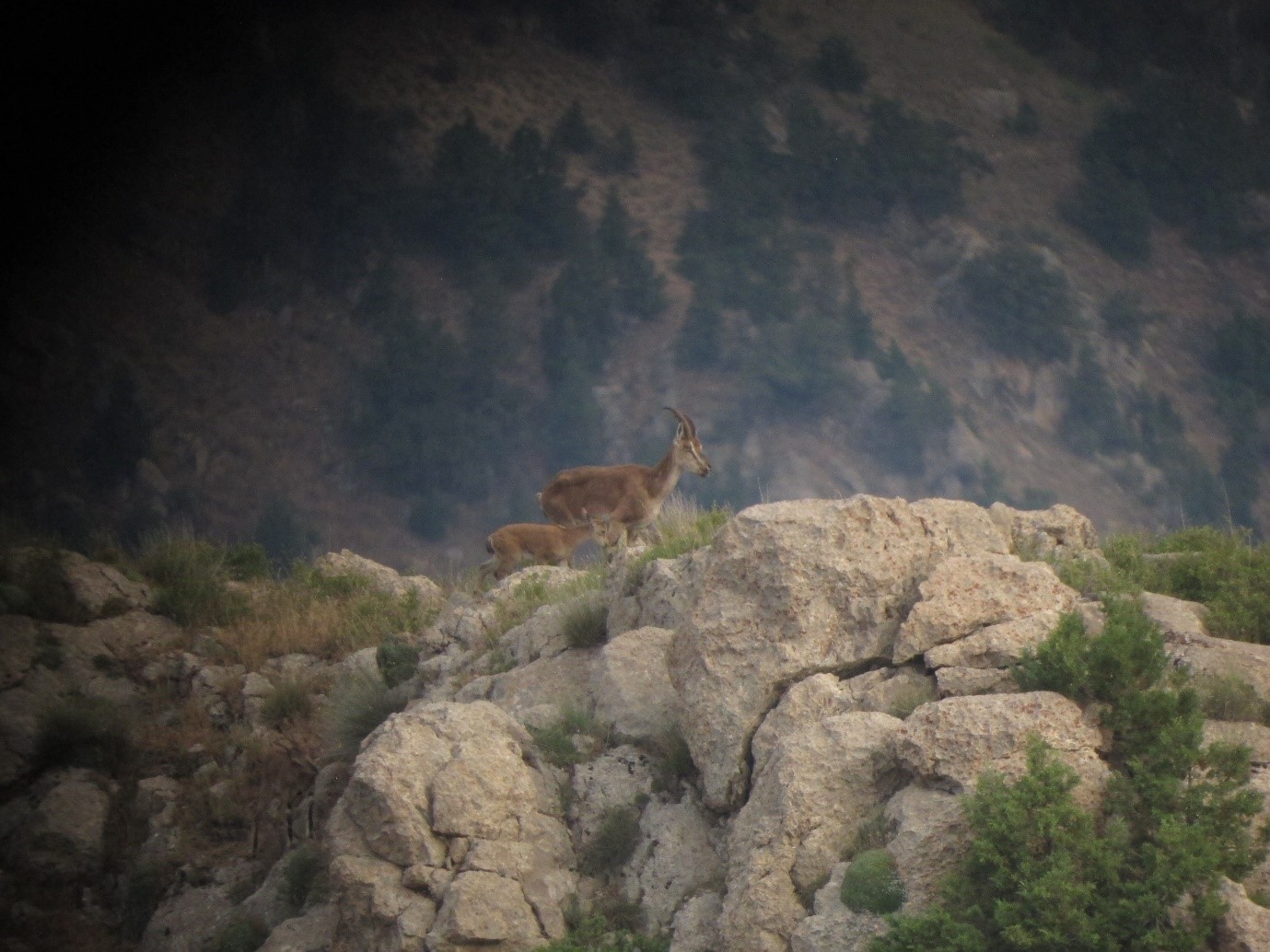Author: Emil Lundahl
E-mail: emillundahl97@gmail.com
A bird count conducted by ArAves
Author: Emil Lundahl
E-mail: emillundahl97@gmail.com

Emil, Debby, Gosha and Zuka.
Introduction
The Foundation for the Preservation of Wildlife and Cultural assets (FPWC) work for wildlife protection, environmental education and sustainable development in Armenia. In 2010 FPWC set up the Caucasus Wildlife Refuge (CWR), an area of currently 30 000 hectares spread over the country, to conserve unique and endemic biodiversity of the region. This is where ArAves arranged this bird count in July by conducting 32 transect in different ecological zones within CWR. ArAves was founded by FPWC in 2017 to implement science based conservation and to support conservation education.
Timing
Me personally had lowered my expectations due to the time of year but it turned out to be pretty good for seeing most species. In July the alpine birds have climbed as high as they get, but since we were able to reach those heights this was not a problem. The song activity was high in the mountains but low in the lowlands. All birds were in breeding state and we had a lot of fledged juveniles. The begging juveniles and parents in search of food helped to see many birds. The downside of going in summer might be that the snowcocks stay seemingly quiet, a species we missed.
The weather
The weather overall was very good. No long-lasting daytime rainshower and no strong winds. The coldest temperatures we experienced in the mountains at 3 000 metres was 10 °C. The warmest around 30 °C. The heat at lower altitudes, usually around 26 °C mid-day, made us rest before the temperature dropped in the afternoon at around 5-6 pm.
Day by day
July 1st
At 10:20 the plane touched down at the Yerevan airport and marked the beginning of this adventure. Gosha and Edgar, also involved in ArAves, met me and Debby as we arrived and brought us to the Balcony Hotel. We had some rest and the nice lady who owned the place offered us apricots and cherries fresh from the garden. During the trip we would experience that the delicious apricots were always present.
The afternoon was spent exploring the city, with Gosha leading the way and telling us about Yerevan and the country in general. We then went to the ArAves and Foundation for Preservation of Wildlife and Cultural assets (FPWC) office where we met project leader Siranush and the fourth and final volunteer, Zuka, who had arrived the same day with taxi from Tbilisi. We went through the plan for the coming eight days of bird counts and later met up again at the Lavash restaurant for a nice first Armenian dinner.
July 2nd
Breakfast at 6 am and then a two hours drive east to Hermon where we would spend the night at Lucytour Hotel. As we unpacked the cars, a Bearded Vulture circled low over the hotel! We got a good look at the bone breaker, a name which comes from their habit of dropping pieces of bones from a big height onto the rocks in order to get to the bone marrow.
After leaving luggage at the hotel we continued to the village of Vardahovit where we met with the park ranger of this area, Vardan. Some of us went with him in his soviet jeep, which proved to be very useful in the coming terrain! We then started up the mountains where we would do the first transects. The number of birds seen from the car along the way was surprisingly high with lots of Common rosefinches, Red-backed shrikes, wheatears and also a very likely Radde’s Accentor perched on a rock next to the track. It was therefore hard to sit still, not only for the bumpy ride! At around 3 000 metres above sea level we finally stopped. Among the patches of snow there where lots of Water pipits displaying, Horned larks, Skylarks and twites. These proved to be some of the most numerous species in higher parts of the mountains. Also several Long-legged buzzards where seen and Quail was heard which where both common species up here. After transect we had a nice lunch served on the hood of the jeep.
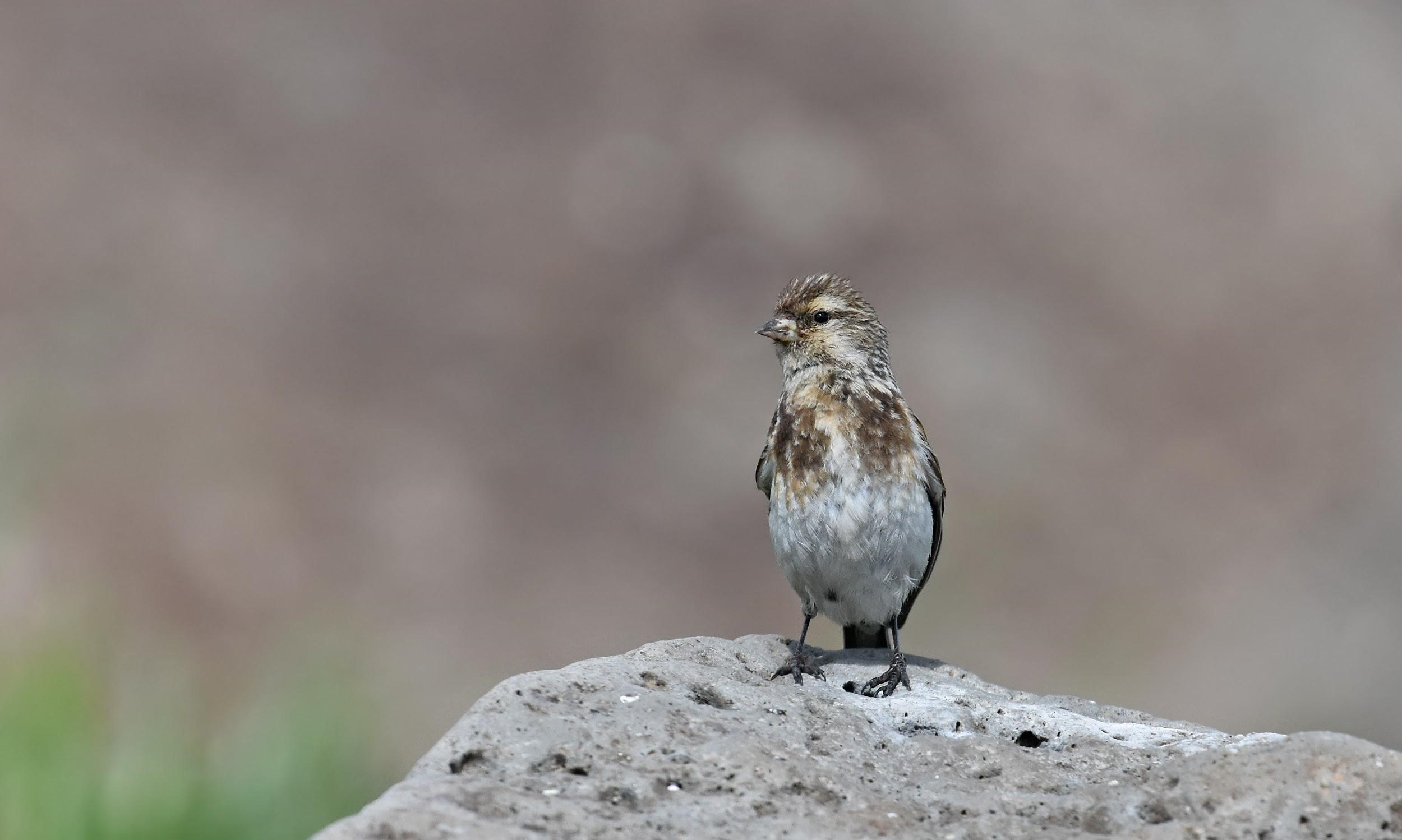
Twite Linaria flavirostris brevirostris
We descended for transects further down. At 2 700 metres we had some nice species in rocky but green terrain close to a small spring such as Radde’s Accentor, Asian Crimson-winged finches, Red-fronted serins and a European Dipper. At lower altitudes other species took over such as Red-backed Shrike and Whinchat and an Ortolan Bunting was seen. Back to Lucytour Hotel for a quick rest and then dinner, summarizing a memorable first day of counts!
July 3rd
Today’s plan was similar to the one of yesterday. Before leaving the hotel in the morning we realised there was a Dipper’s nest right by the parking lot with calling chicks inside. The first stop was made by a small sheep farm at 2 500 metres where we drank from a spring with naturally carbonated water. A new and refreshing experience! This also turned out to be one of the highlights of the trip bird wise, with birds everywhere: 20 rosefinches, twites, linnets, whinchats, Northern wheatears, Water Pipit, Tree Pipit, Black Redstart, Red-fronted Serin, Marsh warblers, two Radde’s accentors (carrying food for young), Rufous-tailed Rock Thrush, two juvenile bluethroats and four Crimson-winged finches from which one was even displaying in flight. After this fun start we continued upwards but didn’t get far until one of the cars got stuck due to the steep and very rocky “road”. Therefore only the ranger’s soviet jeep could continue. While struggling with the other car two Grey partridges were flushed.
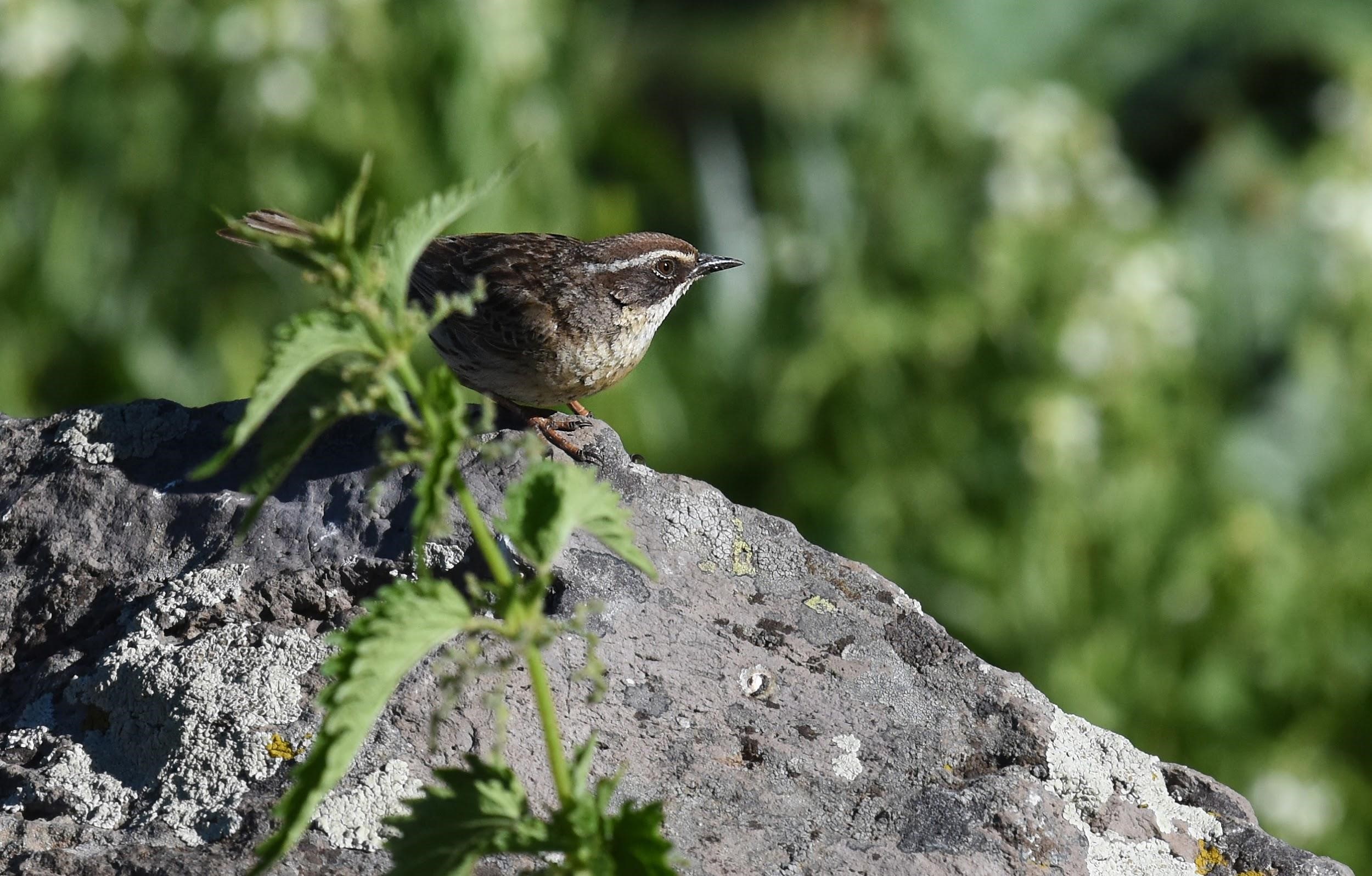
Radde’s Accentor Prunella ocularis
A target species for today was the Caspian Snowcock which we unfortunately never managed to see or hear. Perhaps the date and late time in the day meant they just stayed quiet, since we visited several good-looking places for this species. At one of these sites though, Zuka managed to find us a Syrian Brown Bear walking along the opposite side of a gorge in it’s almost sand-coloured fur. Brief but exciting views of this great animal at 3 000 metres! At the other transect site at 3 500 metres we had even more Crimson-winged finches (10-15 birds during the day) and had great views over Lake Sevan, the biggest lake in the Caucasus region covering one sixth of Armenia’s surface, and over parts of Nagorno-Karabakh.
The last transect was made with all of us together again at 2 200 metres. This altitude meant a new set of species: Black-headed Bunting, Rock Bunting, Common Whitethroat, Cetti’s Warbler, White-throated Robin and the only two Alpine swifts seen on the trip.
We had dinner at a food court in Yeghegnadzor where also two buss loads of young soldiers decided to stop. They were on their way for half a year of training before serving at the border to Azerbaijan. The two countries are officially at war and apparently guns are fired at a daily basis in the most sensitive parts of the border.
We then found the Hotel California in Yeghegnadzor and had a good night’s rest. Although our heads were still bumping as if we were still in the jeep…
July 4th
Today we headed further south for the village of Gnishik, where FPWC owns a house which is for the moment being prepared as a guest house. We met up with the local ranger Norair and went with him and his daughter to the nearby Norovank Gorge to do transects. The elevation was around 2 000 metres and we drove through lush meadows with tall grass. Lots of quails flushed in front of the car and also sang everywhere. We were handed sticks for walking and keeping away snakes, since both Armenian and Levant vipers are present, before initiating a beautiful hike through the gorge. We finally got good visual views of Eastern Rock Nuthatch which later showed to be a very common bird in any suitable habitat.

Upcher’s Warbler Hippolais languida
Armenian coffee and fruit back at the ranger’s house prepared us for more transects. The next transect started with a Bearded Vulture overhead and our first proper views of Bezoar goats. A male with big horns was an impressive sight. A family of Ring ouzels were seen among other more common species. After transect we had lunch at the ranger’s house and tried homemade orange vodka before heading to Urtsadzor. At this point Siranush had to leave us to travel to the USA.
In Urtsadzor the FPCW runs a very nice eco lodge and this became our home for the coming six nights. Next to the lodge they also run the only bear rescue center in Armenia. At the moment there were eleven bears present. Several had been rescued from being held as illegal pets. Sitting out on the porch during nights, you would occasionally hear bears roaring which took some time getting used to!
Also staying at the Eco Lodge was Dave from Ireland, who it turned out is a good friend of my former biology teacher back in Sweden! The world is a small place. From the Eco Lodge we saw Bezoar goats daily, as did we Bearded vultures. They also keep Bearded vultures for breeding and one juvenile had been hatched here last year. The nights at the porch could be exciting with visits from Persian jirds and big camel spiders. In the darkness you would sometimes hear rocks falling, presumably from goats climbing the hillsides.
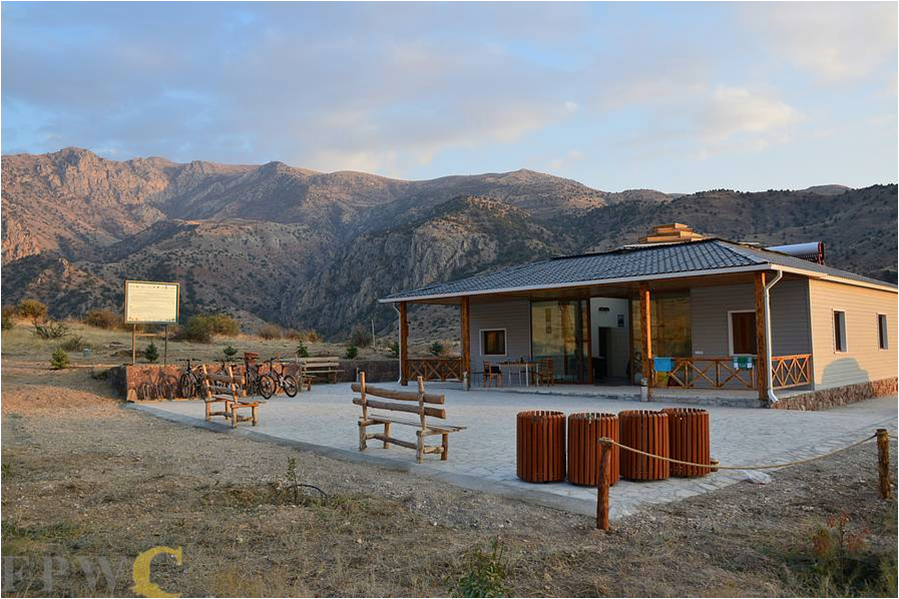
The FPWC Eco Lodge in Urtsadzor
July 5th
The coming days we started one hour earlier due to the lower elevations and therefore higher temperatures in the day. Today’s transect area was Vedi Gorge some 10 km west of Urtsadzor, a popular sight for visiting birders since it’s a great place to see the semi-desert species. There was a high number of birds with lots of juveniles moving about. Rufous-tailed Scrub Robin, Finsch’s, Black-eared and Isabelline Wheatear, Eastern Rock Nuthatch, Menetries’s, Eastern Orphean and Upcher’s Warbler, Grey-necked Bunting, Trumpeter Finch and two possible flyby Desert finches were seen during our 7 km transects through the gorge.
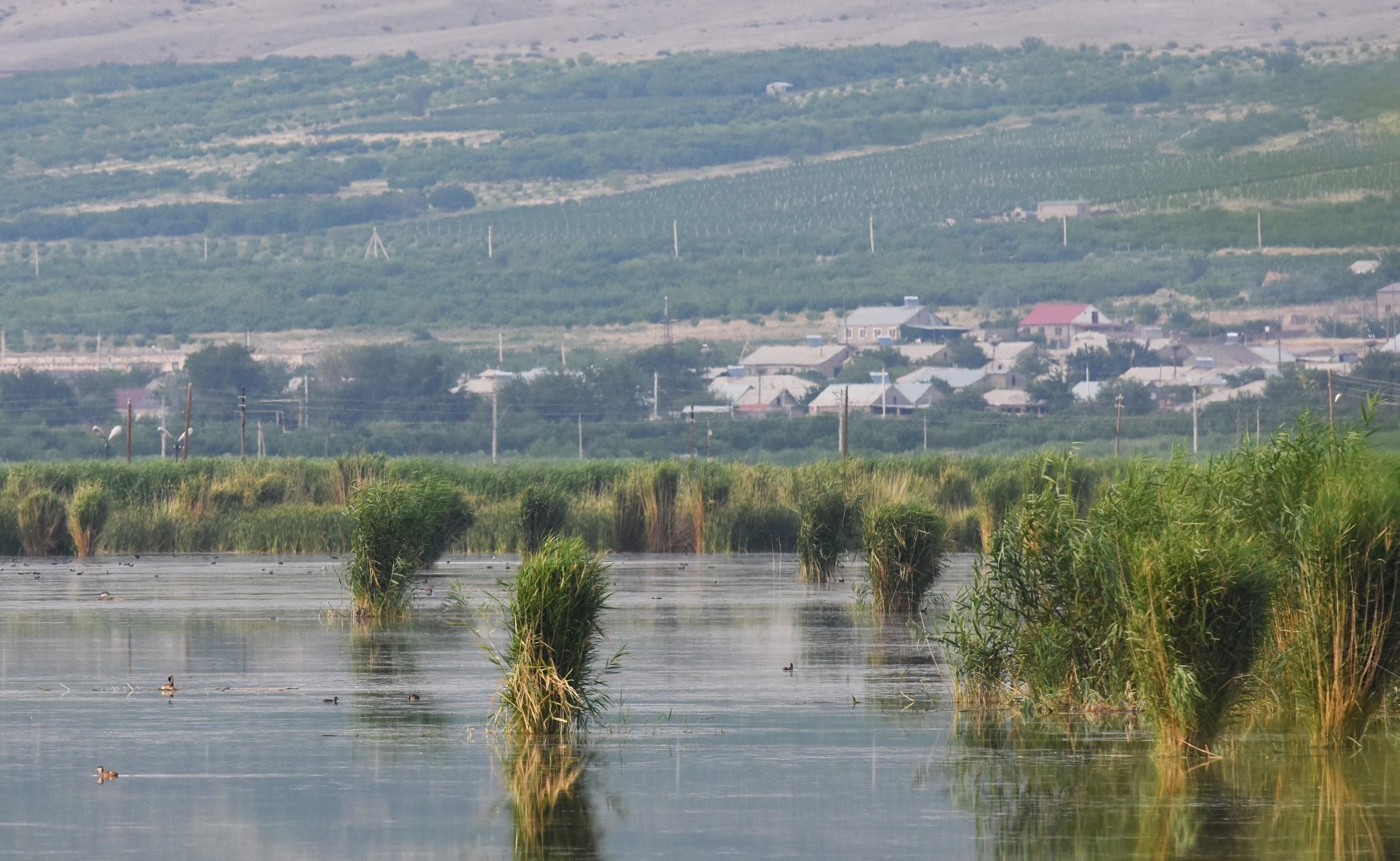
Armash Fish Ponds
After a hot, but not extremely hot, morning we had a very welcomed armenian lunch back at the Eco Lodge. In the afternoon we went to the perhaps most famous site for birdwatchers in the country: the Armash Fish Ponds. The area consists of a big number of man-made ponds with a good amount of reed with dirt tracks going between them. Plenty of birds were around with six species of egrets and herons, many Whiskered terns and Pygmy cormorants and quite some Blue-cheeked Bee-eaters. Very enjoyable and completely different birding for us! The reeds were full of Reed warblers and Great Reed warblers. Also Bearded and Penduline tits and two juvenile Moustached warblers. The weather was really warm and humid as we arrived but eventually turned cooler. As the sun was setting we did the last transect standing on the back of the truck while it slowly moved forward. This proved quite successful as we were now able to see over the high reeds! Highlights at Armash was a colony of 40 (including grown juveniles) Collared pratincoles, five White-tailed lapwings and a single female-type White-headed Duck. But the big show didn’t start until late evening. Flock after flock of Rose-coloured starlings arrived and eventually gathered in their thousands. They then swooshed back and forth in beautiful formations against the red sky and left us speechless!
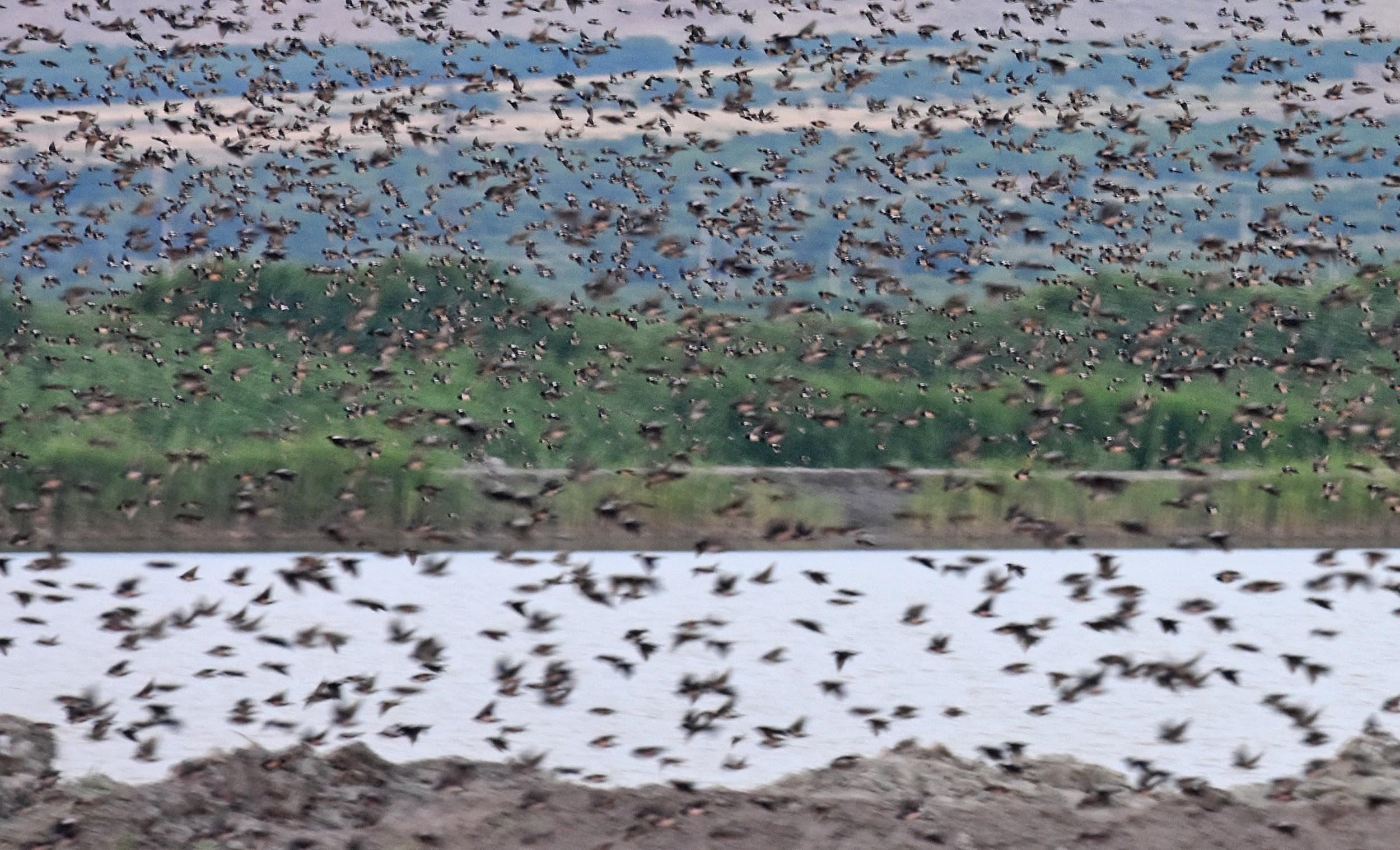
Rosy Starling Pastor roseus
July 6th
In the morning a new ranger named Boris picked us up and brought us to Leopard or Hell’s Canyon. With some help from a machete we managed to reach the bottom of the canyon with the car and from there started the transect. This one turned out to be one of the toughest due to hard terrain with some light climbing involved. Lots of Rock nuthatches everywhere and both species were seen. Also the first Eastern Olivaceous warblers.
We had a wonderful lunch at the ranger Boris’s house in Tigranashen which was situated in an area that is technically Azerbaijan judging by the map. But since this small patch of azeri land has an equal armenian patch located in Azerbaijan there’s a silent agreement that these two break even. It was clear though that we were close to the border as Gosha heard a loud boom after lunch, likely from a high caliber weapon. This was suspected to be the reason for a small fire that soon emerged on a grassy hillside. Although other causes can not be ruled out. The afternoon transects were somewhat delayed since the ranger was obliged to keep an eye on the fire until it was put out. In the meantime, Syrian Woodpecker and Golden orioles were seen in the garden.
Before reaching the next transect, Boris took us to a small gorge where he knew there were Red-tailed wheatears. Soon enough we had brief views of an adult bird! Also juvenile White-throated robins and a singing European Nightjar, which was a surprise under the baking afternoon sun. As we later once more descended into the Leopard Canyon, we were surprised by three very juvenile Red-tailed wheatears. It turned out there was another brood of at least two wheatears further along and also one adult male. We decided to make a transect here and had a nice walk along the track down the canyon. Grey-necked Bunting, Tawny Pipit, Golden Eagle and more Eastern Olivaceous warblers were added to the count before we finished and returned to Eco Lodge.

Red-tailed Wheatear Oenanthe chrysopygia
July 7th
Khosrov Forest State Reserve was our destination today. This is one of the oldest national parks in Armenia and is, under normal circumstances, off limits for visitors. We visited adjacent areas of the park owned by FPWC.
A Chukar with small chicks crossed the road before we reached a forested area where we did the first transect. Here we had several Syrian woodpeckers and some other new species for the trip. Finally we also saw raptors in the air, mostly just singles but several different species: Honey Buzzard, Cinereous Vulture, Booted and Imperial Eagle. On the hillsides there were still signs of the big fires which lasted during several days back in 2017. During another transect we had brief views of a female Semi-collared Flycatcher.
After lunch and a rest we went to some mountains in the vicinity of the Eco Lodge. Two very young Golden eagles showed off and we soon found the used nest up on the cliffs. A new species was Red-billed Chough as four birds came to visit nests in hollows in the mountain. Also for the count were 18 chukars. This species was really plentiful in the surroundings of the Eco Lodge which we thought was a good sign there isn’t much illegal hunting going on.
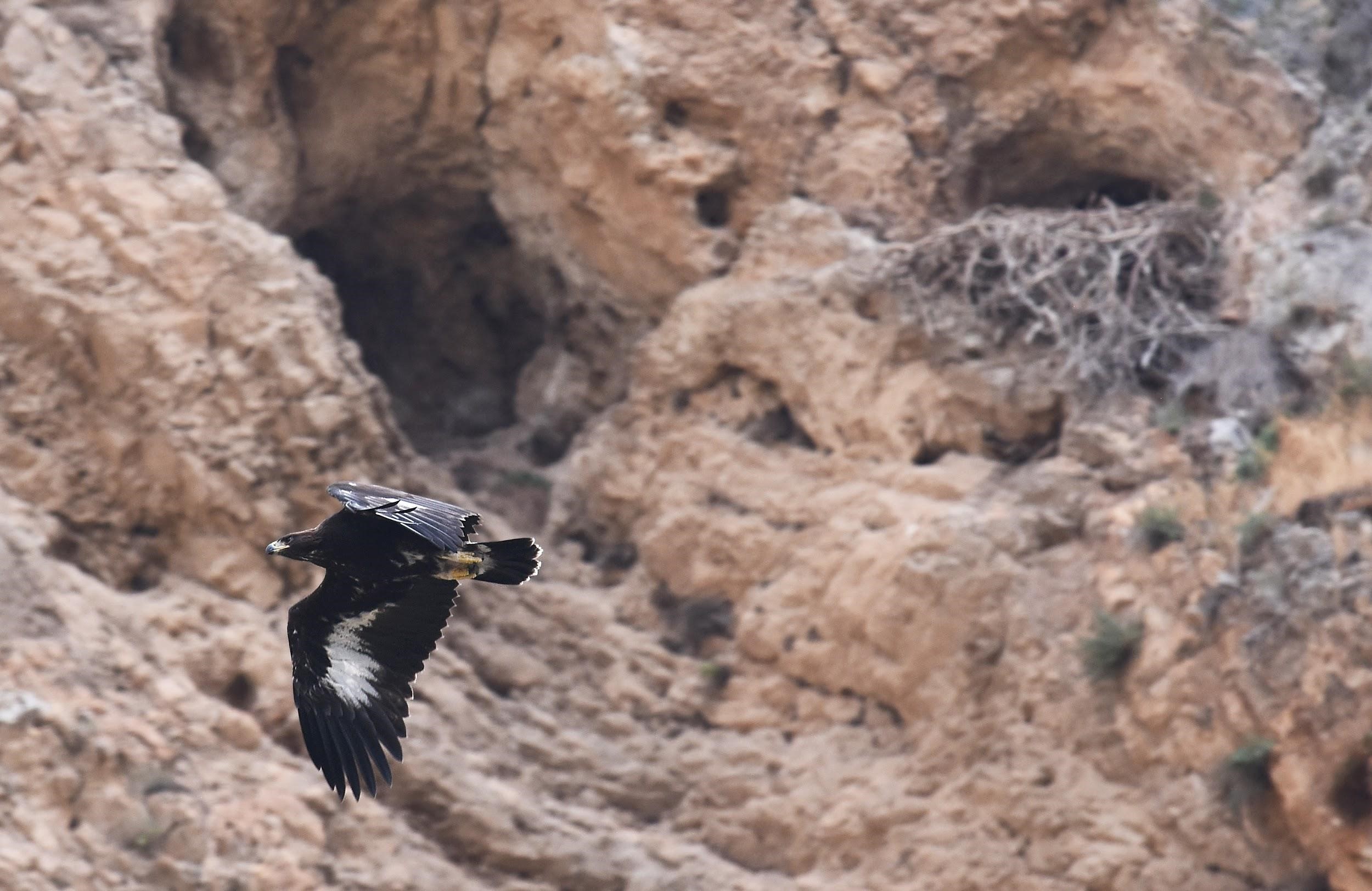
Golden Eagle Aquila chrysaetos
July 8th
After a long drive on a very bumpy road we reached our starting point: a 2 280 metre peak in the Danak mountains. It had for once rained while driving but it stopped just in time for us to leave the car behind. From here we had excellent views of a group of Bezoar goats at close range, almost in eye-level. We were also told by the ranger Tigran that a Caucasian Leopard was caught on a camera trap last year, patrolling one of closest peaks. We had a nice transect with quite a few Tawny pipits, Ortolan buntings and Ring ouzels to mention just some of the species present. One more transect further down the mountains and back for lunch. We visited the bears at the rescue center before going to Dashtakar Gorge, which is very close to the east of Vedi Gorge. Vedi is the only known site for Desert Finch, which was discovered here in 2016, and we had hopes of finding this species also at Dashtakar.
We had quite nice birding with somewhat similar species as Vedi. Although no Desert Finch nor Pale Rock Sparrow, so far. But, just as hope started to leave us and the sun was setting, a small bird came flying and landed by the small stream in front of us. A male Desert Finch! It had one single gulp of water before taking off and disappearing just as soon as it had turned up. A highlight of the trip, no doubt!
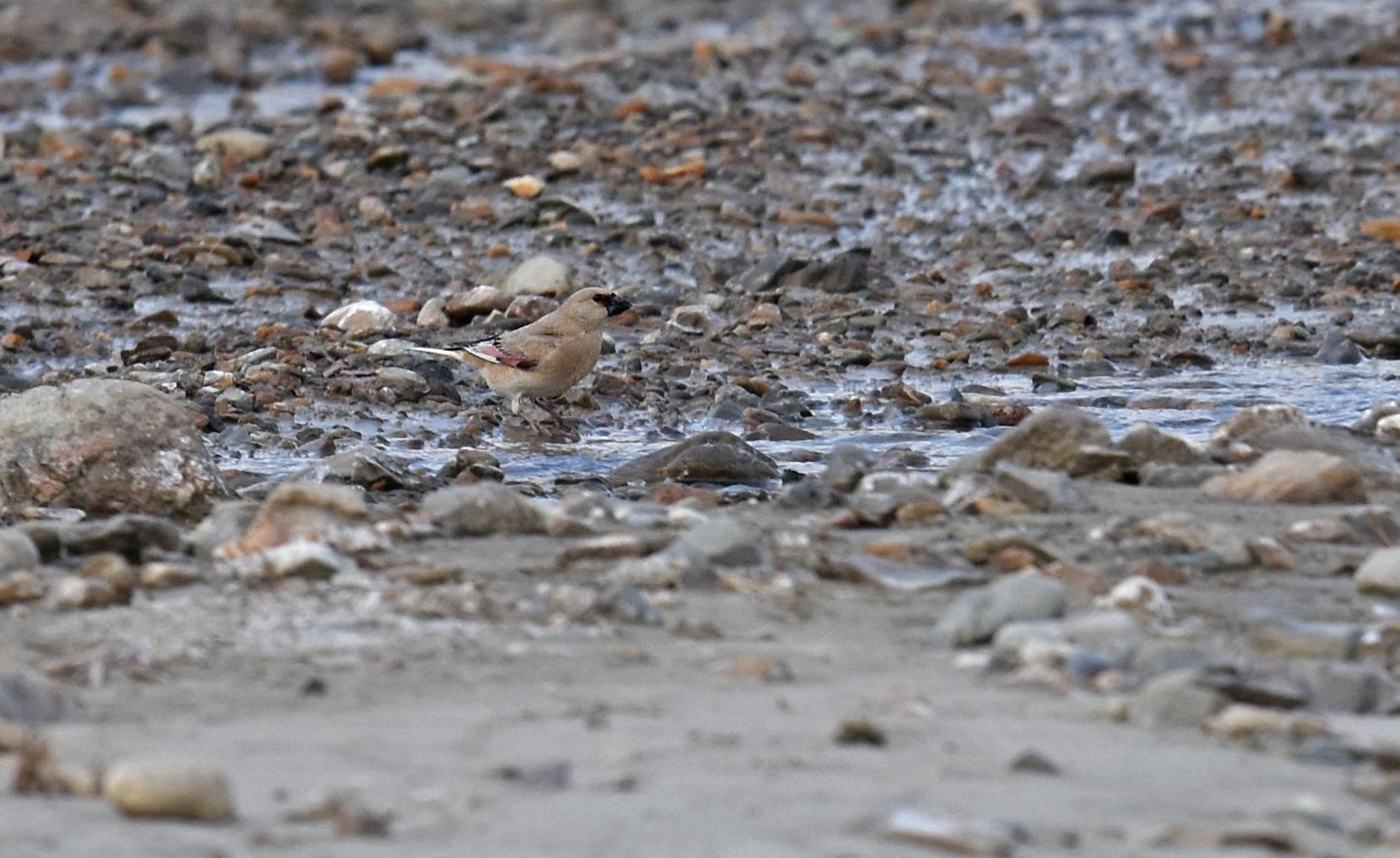
Desert Finch Rhodospiza obsoleta
July 9th
This was our last full day and the last day with counts. In the morning we went to another part of the Khosrov reserve and did transects with similar birds as previously, highlight being a flushed Nightjar. We had delicious traditional dolma for lunch and in the afternoon went to a fortress nearby. A rain shower made us stay in the car but as we got out we were met by a nice family of White-throated robins, including an adult male.The fortress itself held Rufous-tailed and Blue Rock Thrush. Our final transect into a gorge was very enjoyable and among other nice observations we had a flock of no less than 50 chukars.
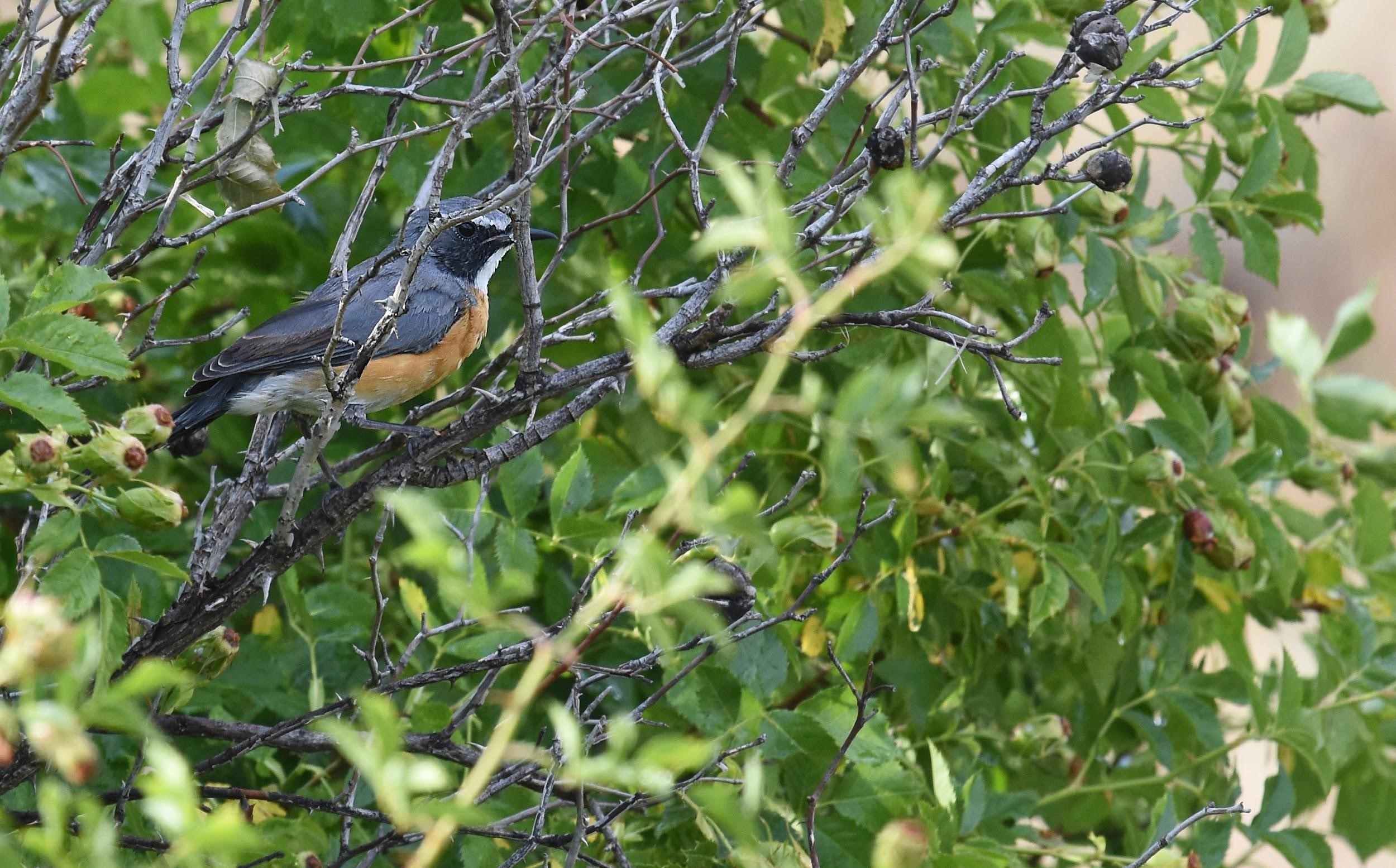
White-throated Robin Irania gutturalis
July 10th and 11th
We allowed ourselves a sleepin before packing our last belongings, saying goodbye to the Eco Lodge and the local people, before driving back to Yerevan and the airport. Here we said our goodbyes to Debby. Zuka took a taxi back to Tbilisi and myself had one more night in Yerevan and then flying home on the 11th. Gosha and Hrachya made sure we all departed nicely.
We are all very happy about this trip and would like to thank ArAves and FPWC for flawless logistics!
List of species (following IOC taxonomy)
Birds
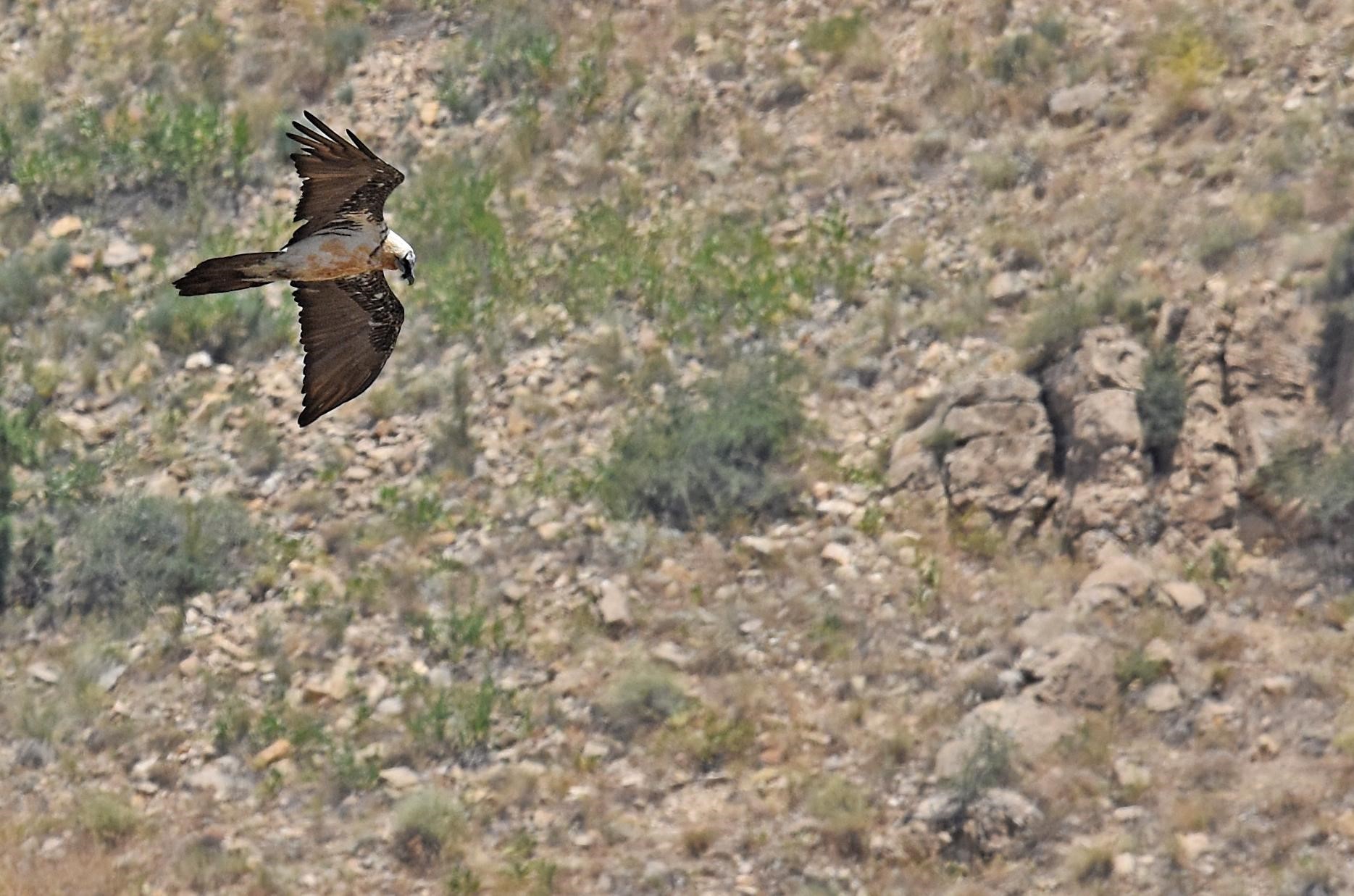

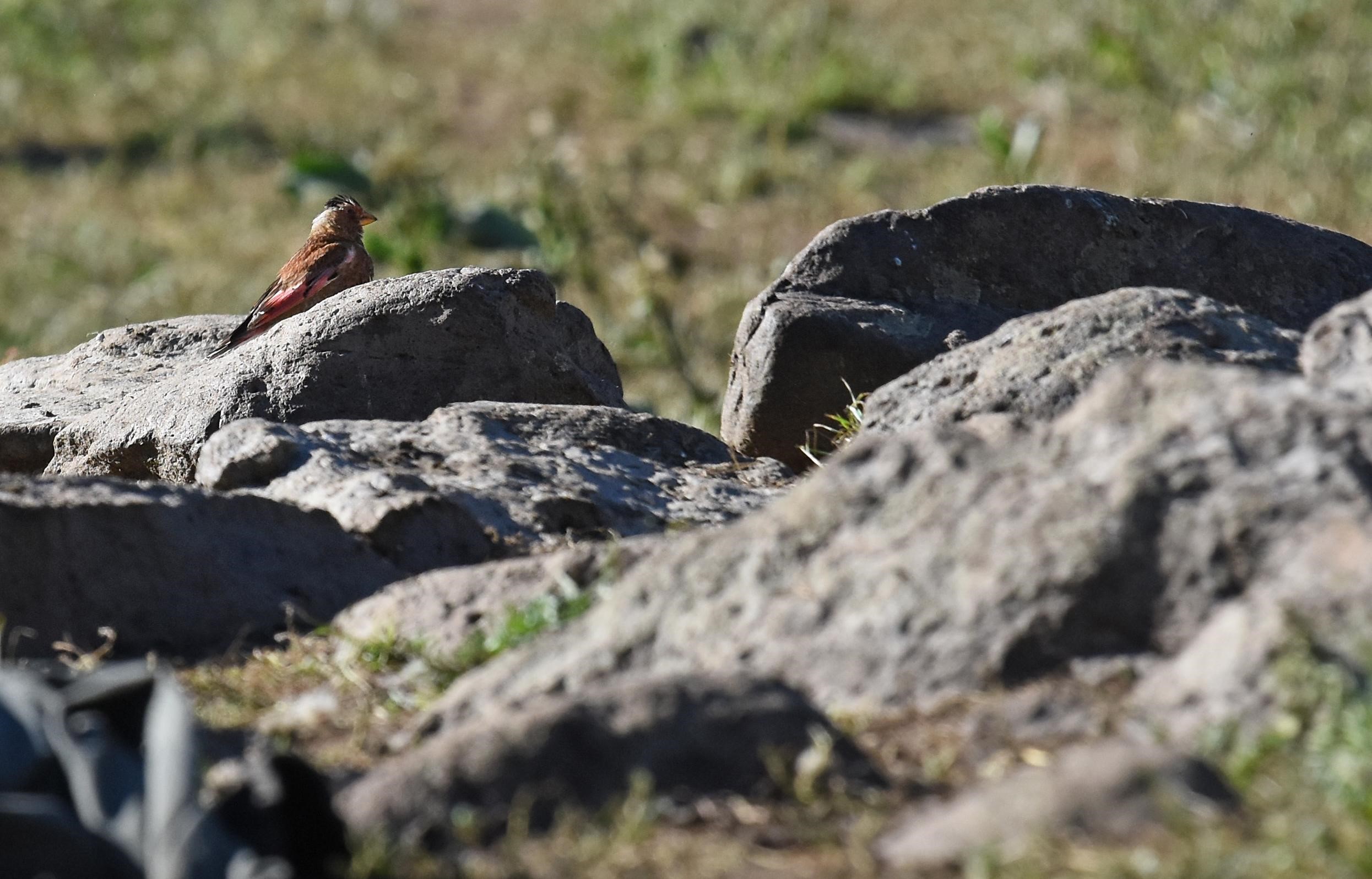
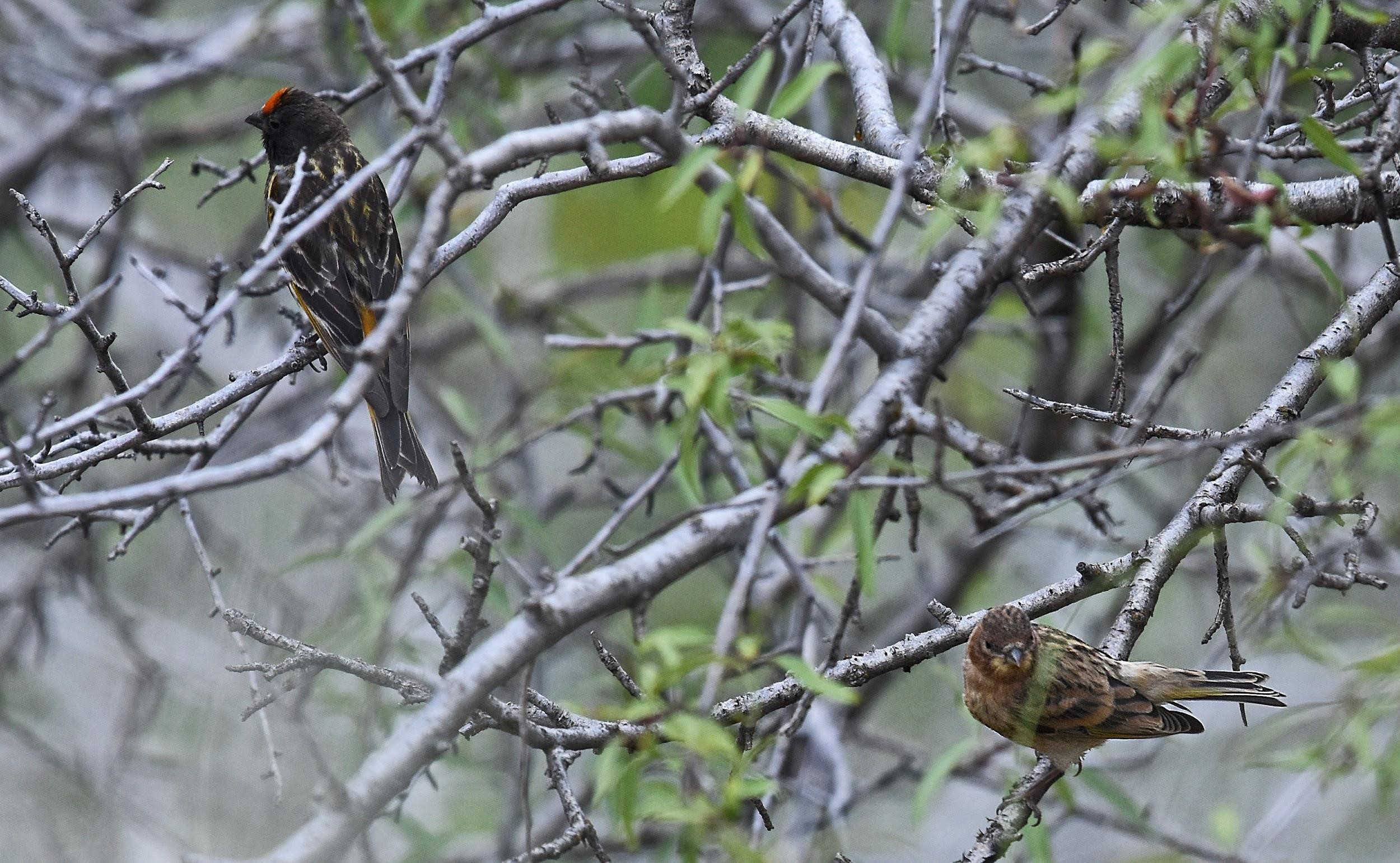
Mammals
